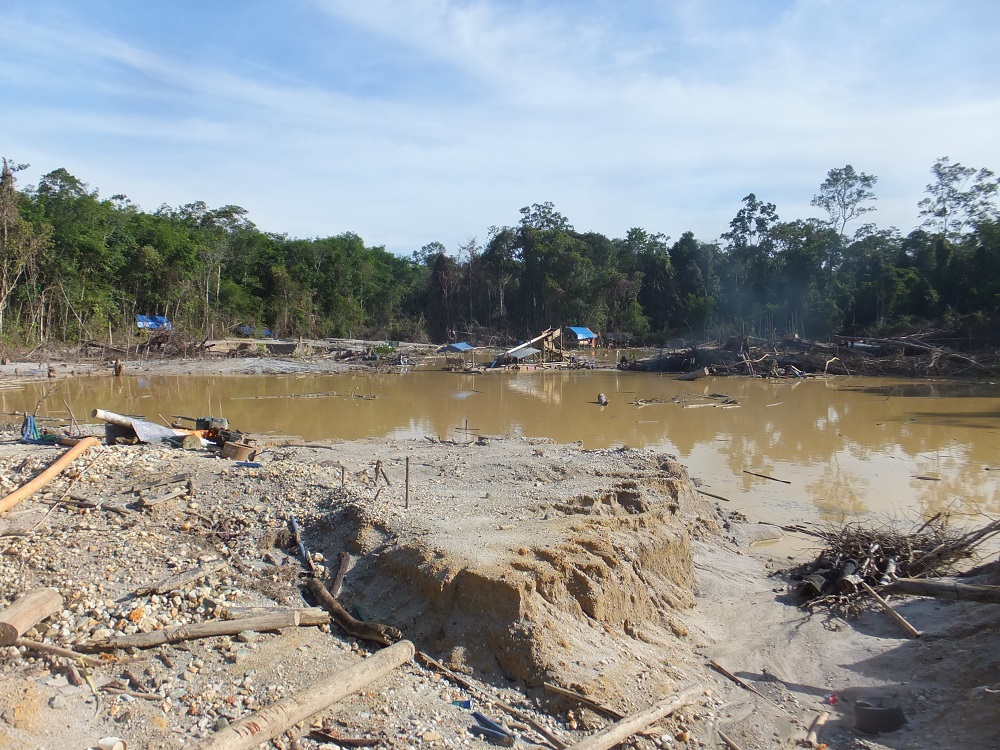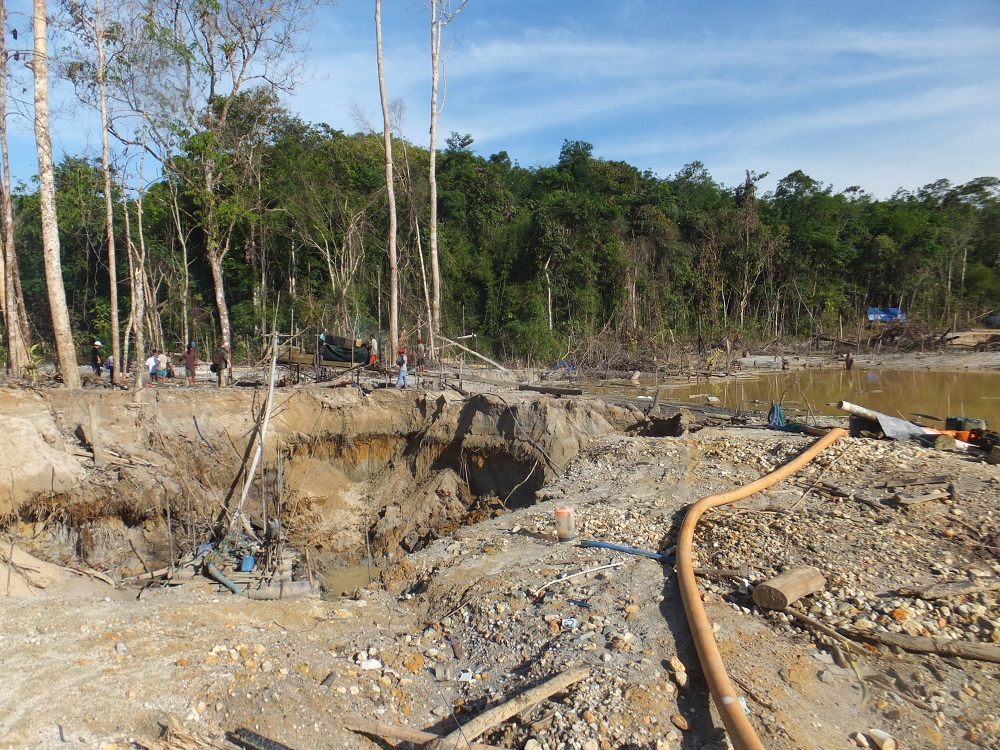Irrespective of location or commodity, peasants now compete with multinational mining companies on the mineral-rich tracts of Indonesia
In recent years, the Indonesian state has aggressively pursued economic policies that view natural resources, such as land, its mineral resources and water, as tradeable commodities subject to market forces. Consequently, the Indonesian state has, to varying degrees – depending on the commodity and the local context – exposed its mineral resources to investments by local as well as foreign entrepreneurs. While community protests against invading mining corporations have claimed increasing media attention, some rural communities have also exchanged their ploughs for picks, taking up livelihoods that depend on informal, artisanal and small-scale mining.
Mining as part of the informal sector
Irrespective of location or mineral commodity, the scramble for resources has reached a crescendo as peasants compete with multinational mining companies on the mineral-rich tracts of Indonesia. Travelling around the mineral-bearing tracts, you now find innumerable rural people toiling to extract enormous quantities of mineral from beneath the ground. These miners inhabit the margins of the mainstream mining economy. In Indonesia, some are known as gurandil (literally, ‘those who jump from cliff to cliff’) or by a more derogatory term, PETI (Penambangan Tanpa Izin or people mining without a permit). These terms reflect their mobile and stealthy mining practices.
This is a new type of extractivism which has received less attention from those who debate the country’s resource politics. Neither the powerful non-governmental organisations nor the Indonesian government discuss the definitive factors pushing rural people into extractive livelihoods. Nor has the Indonesian state created policies that effectively regulate or legitimate those rural people who rely on extracting mineral resources for a livelihood, since national laws rarely recognise them as proper citizens with valid rights over the resources which they extract. Yet these mineral-extractive activities may comprise a significant part of local economies. These miners can be described as squatters on the contemporary economic landscape of a country that has an excessive reliance on natural resources, particularly minerals.
According to a 2011 report by the Asian Development Bank and Indonesia’s Central Statistics Agency (BPS), Indonesia has an informal sector estimated to be 70 per cent of the workforce. The term ‘informal’ describes a wide-ranging set of practices, labour and production organisation, and includes traditional artisanal miners, small-scale mining and unauthorised activities. If considered as a broad category, then the whole range of mining practices from traditional to technology-intensive, and from licensed small operations to unlicensed and illegal ones could be easily seen as a part of the enormous informal economy of the country.
RAND Corporation expert Alexander Rothenberg suggested that the burgeoning informal sector was an immediate result of the 1997 Asian financial crisis, which saw a decline in the number of workers from urban areas and the industrial sector with a simultaneous increase in the number of workers in rural areas and the agriculture sector. In more recent years, China’s insatiable demand for commodities and concomitant global rise in commodity prices has also provided an impetus for many peasants to leave agriculture, forestry or other surface-based livelihoods, to instead focus on the riches beneath the ground.
People’s mining

Community miners can only mine insignificant reserves for subsistence, using simple tools, and are vulnerable to harassment. (Kuntala Lahiri-Dutt)
‘People’s mining’ dates back to ancient and colonial times in Indonesia. Some communities such as the Banjars claim that for many generations they have been mining for diamonds in locations such as Martyapura. This long history of mining is recognised in Mining Law No. 11/1967 (previously Law No. 37/1960) and Mining Law (UU Mineral Batubara or UU Minerba) No. 4/2009, with the term ‘people’s mining’. By using that term, the state not only recognises the traditional mining heritage of indigenous peoples, but also gives local populations the legitimate right, provided they hold mining authorisation or a permit from the district head to exploit minerals on their lands.
Whether traditional or more recent, the fact remains that this kind of mining has otherwise never been clearly addressed in Indonesia’s legislation. The uncertainty surrounding these miners’ status leads to around 90 per cent of them being regarded as ‘illegal’, which has caused many to feel nervous about their future. Great diversity exists in relation to the miners, their contexts and their mining practices. Mining practices vary from artisanal, individual and opportunistic enterprises to more organised, and sometimes licensed, small-scale firms, who hire wage labourers and engage with markets that are located well beyond their immediate vicinity.
To make their voices heard, representatives from groups of miners attended the conference on tambang rakyat or ‘community mining’ in Jakarta in November 2016. Participants noted many difficulties with the existing definition of ‘people’s mining’.
First, ‘people’s mining’ is allowed only in areas that are designated by the Ministry of Mines as ‘economically insignificant’ – that is, unsuitable for commercial exploitation by large corporations. This implies that local people’s mining rights are still largely marginal to mainstream interests and keeps these populations marginal, mobile and scattered.
Second, the law says that ‘people’s mining’ should be carried out only by a family unit or should be hereditary, and support daily subsistence needs only. In effect, this forecloses to miners the possibility of surplus accumulation to rise out of poverty. On a more practical level, this leaves miners open to intense harassment and exploitation by the police and other state security, law and order enforcement agencies. In one situation narrated by representatives at the conference, miners were rounded up by law enforcement agencies of the government for extracting minerals from their own land.
Third, there are no specific measurements, nor any general convention, that explicitly define the methods and tools for ‘people’s mining’. The general point is that the miners must use ‘traditional methods’, which assumes use of simple technology. Again, this binds these miners to simple forms of technology that is more labour-intensive and produces lower outputs which does not allow for the accumulation of surplus.
Finally, most importantly, the law clearly arbitrates that such mining should not interfere in a larger mining company’s operation. This reveals the state’s clear preference for larger-scale extractive operations over those carried out by community miners.
Answering the ‘problem’ of extractivism
A question is frequently asked in Indonesia with regard to people’s rights or entitlements to resources: ‘whose resource is it anyway?’ In the absence of greater clarity, larger corporations with state support can use their greater powers to mobilise capital and public opinion to push informal miners off the lands they are extracting from. Informal miners have often been the first to know the existence of, and to extract, certain important mineral commodities that were later taken over by large corporations. Yet, informal miners receive no sympathy from the environment movement either, since they are viewed as causing serious damage to waterways and landforms.
It is important to remember that it is not a unique problem to Indonesia. In fact, informal mining is taking place throughout the Global South wherever states have aggressively pursued a policy of extractivism. The UN Economic Commission for Africa reports that around 25 million were directly employed in informal, artisanal and small-scale mining in 2005, with another 150 to 170 million relying indirectly on these livelihoods. It is difficult to accurately estimate the number of miners as many of these people are migrants or seasonal miners, and if asked, would designate themselves as rural peasants. As many as half of these jobs are filled by women, with around two million children also involved as part of the family labour unit. Clearly, the answer to the ‘problem’ of extractivism of the poor must be sought both nationally and in broader explanations of political economy of countries in the Global South.
Kuntala Lahiri-Dutt (kuntala.lahiri-dutt@anu.edu.au) is a senior fellow in the Resource, Environment and Development program in the Crawford School of Public Policy at ANU College of Asia and the Pacific.












